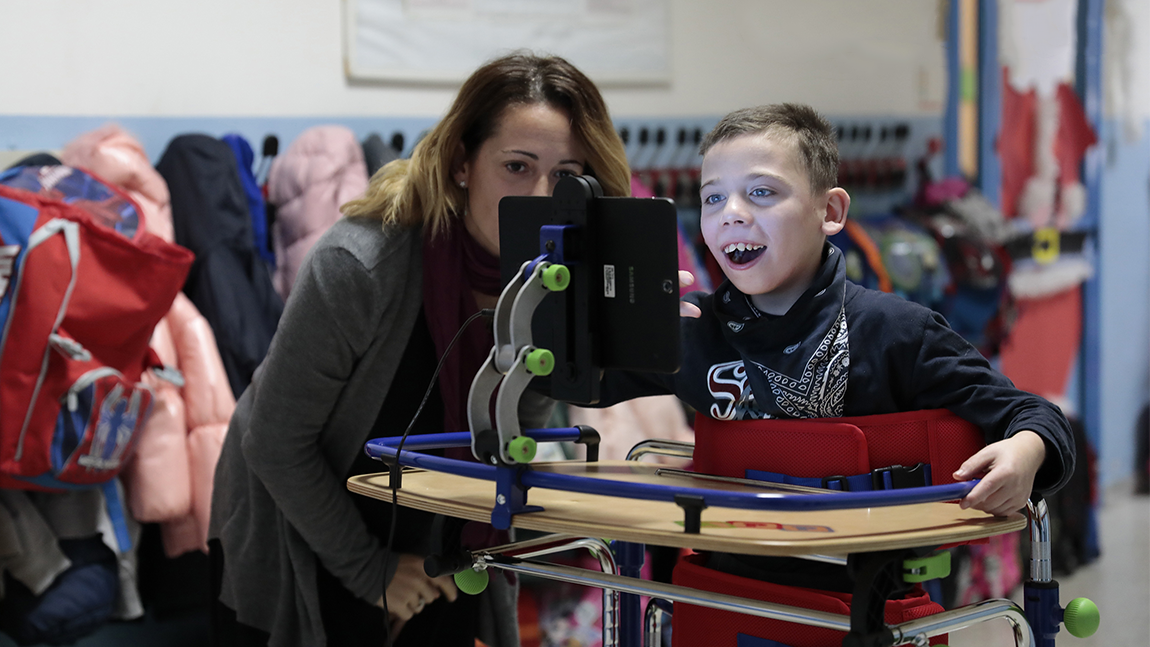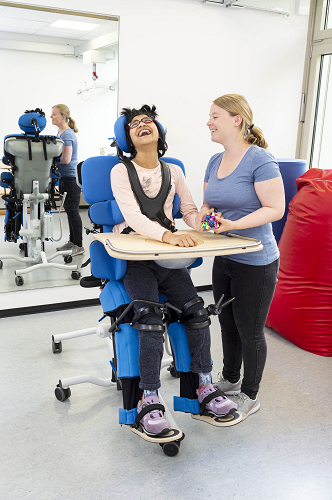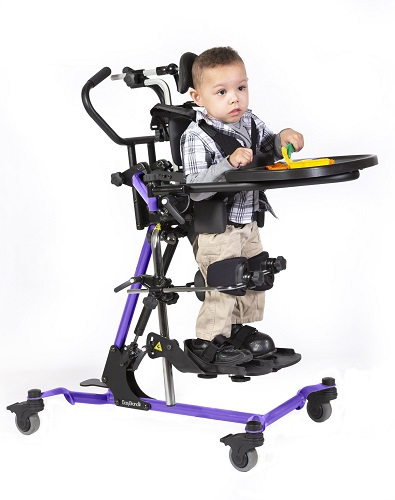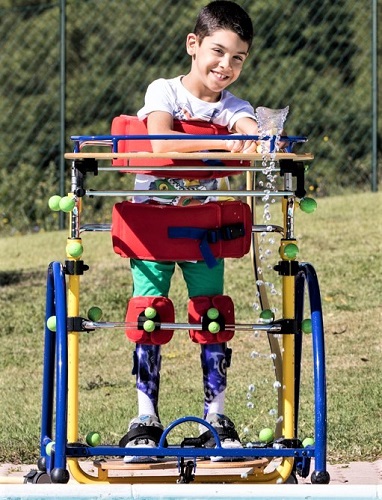The Importance of Assisted Standing

Individuals with motor impairments experience difficulties standing. Implicating factors can include imbalance of muscles around the hip, knee or ankles, weakness in antigravity muscles affecting the individual’s ability to manage trunk, hip and knee extension and limited ability to manage the attentional demands of standing.
written by Venesha Moodley
Clinical Educator
(B.OT, Postgrad Cert in Clinical Rehab)
The use of standing frames is frequently included in a therapy program for children with cerebral palsy at GMFCS IV and V, who spend most of their time sitting. Research suggests that benefits of standing include:
- Improvements in range of movement of the hip, knees and ankles for children with motor impairments who are unable to achieve standing without external support. Whilst in sitting, joints are flexed for a prolonged period with the potential to develop contractures at the hips, knees and ankles. (Baker et al, 2007; Dunn et al, 1988).
- Positive effects on bone mineral density.
- Promotion of pelvic alignment and strengthening of trunk and pelvic girdle muscles.
- Alternate positions – change from sitting to standing gives pressure relief to the bottom and assists with maintaining skin integrity.
- Builds head control.
- Contributes to improved physiological function, including cardiopulmonary and bowel and bladder function.
Standing frames can provide a larger base of support with the adjustable supports controlling joint positions such that the centre of gravity is maintained. Where possible this can assist with development of postural control. Based on the developmental milestones of typically developing children, initiation of a weight bearing program using a standing frame can commence from approximately 10 to 14 months of age.
The basic standing frame options include:

Vertical/Upright standers are positioned upright in the frame. An alternate option will include the sit to stand frame where an individual is transferred from a seated position and transitions to a tolerable standing posture. By regularly changing through a variety of standing positions, a person is more likely to stand for longer periods, adapt to surroundings and enjoy their interactions with family and peers.

Supine standers are typically used for individuals with poor head and trunk control. The posterior trunk support together with the use of rearward tilt facilitates an upright position with graduated changes to upright standing. The vertical height adjustment makes transfers easier and provides versatility and easy adaption. Supports provide functional alignment and help maintain a range of movements.

Prone Standers permit a more active standing posture with anterior trunk support in a slightly forward tilted position, stimulating extension of the hip and trunk and improves reach capacity with the upper limbs. Gradual movement toward the horizontal may contribute to postural muscle strengthening of the spinal extensor muscles in the neck and upper back against gravity
Multi-positional standers are a single stander which offer the benefits of ease of change from supine to prone and accommodates growth. The range of accessories support varying levels of support, including de-rotational trunk supports, independent adjustments for limb length discrepancies and angle adjustment for variable range of movement.
Haggland G, Andersson S, Duppe H, et al, 2005 estimated a 15 to 20% risk of children with CP (in the whole population of children with CP) are at risk of children developing a dislocated hip, with the risk being highest between 2 to 5 years of age in children with severe limitation in gross motor function.
Martinsson et al., 2011 looked at the effects of abducted standing on hip migration percentage and range of hip and knee motion in children with CP were studied for more than 7yrs in 2 case control groups. Standing abduction at 15 to 30 for 10Hrs/wk were found to reduce hip migration percentage and preserves range of movement for up to 7yrs.
Selecting the stander that works best for your client requires consideration of a few factors such as:
- Anthropometric measurements
- Size of the stander
- Transfer method to and from the stander
- Ease of adjustment

